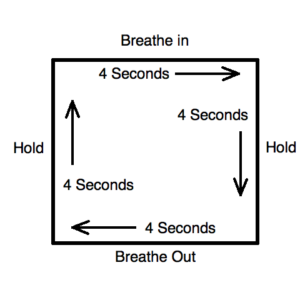Many people make a big deal out of breathing, however, breathing is one of the first things you do when you are born!
Breathe in, breathe out, that’s as simple as it can be said, and thus ends this article.
Just kidding 😉
Or am I?
The focus on breathing is not only about health, but largely also about better performance in everyday life, leisure, and sports. By using special breathing techniques, you can optimize your Karate.
Before we take a closer look at the individual exercises, it is important to make it clear how you should breathe in general.
This is very simple, inhale through the nose and exhale through the nose as well.
The nose is designed to breathe; the mouth is for consuming food. Do not breathe through your mouth unless you have some problems with your nose or are exhausted. When you are exhausted, it is of course difficult to avoid, and mouth breathing takes over.
How does it become a habit to breathe through the nose all the time? Remind yourself of it a few times a day. A good idea is to let the tongue rest while touching the ceiling of the mouth. It essentially blocks breathing through the mouth and it is the natural way to rest the tongue.
Natural breathing comes from the abdomen and provides relaxation. Don’t breathe with your chest, since this can cause tension in the torso and not least in the shoulders. Furthermore, chest breathing only causes shallow breathing.
You can easily observe the abdomen expanding and contracting, respectively, on each inhale and exhale through your nose when breathing normally.
In addition, it is a good idea to breathe slowly but surely. Take in large amounts of air with each breath.
But the most important thing: Always breathe through your nose – both in everyday life, but also when you do exercises unless a particular breathing exercise specifically states the opposite!
Some Karate basic breathing rules.
For Karate, it is about being in a natural and relaxed state, tensions should be avoided. Therefore, breathe with your abdomen (stomach/belly).
A well-known rule is to inhale through your nose on blocks and exhale through your mouth/nose on attack techniques. Again, do it with your abdomen so it stays natural and relaxed.
Another time you exhale is when you are performing a breakfall (front breakfalls, rolling breakfalls, side breakfalls, etc.)
How to calm down, two methods
Box breathing

This exercise is probably the best-known of all breathing exercises. It is used in qigong, Chinese healing culture, and by the US military, etc. This exercise can be performed as a daily practice to optimize your breathing. The result is better stress management, improved mental and emotional awareness, and improved mental control.
It works this way:
- Inhale slowly for 4 seconds through your nose.
- Hold the breath in the lungs for 4 seconds.
- Exhale slowly for 4 seconds through your mouth.
- Hold the breath without air in the lungs for 4 seconds.
Repeat the method about 8-10 times. It is a calm and easy breathing exercise. You can make it while lying in bed watching TV or while reading a book. As you get better at the exercise, you can set the time up to 5 seconds or more.
The main advantage of this exercise is that you calm down completely. The exercise is perfect against stress and anxiety. It is also effective against sleep problems. At the same time, there is much to suggest that it strengthens the immune system.
Tactical Breathing (Combat breathing).
Tactical breathing allows you to voluntarily lower the heart rate and optimize performance. The method focuses on slowing the breathing rate down by breathing through the nostrils. Tactical breathing is a simple but effective tool for dealing with anxiety or stress-related situations.
It works this way:
- Inhale slowly for 4 seconds through your nose.
- Exhale slowly for 4 seconds through your nose. (You can possibly exhale through the nose and a partially closed mouth at the same time).
The difference between tactical breathing and box breathing is that box breathing includes a breath-hold after the inhale and exhale.
Concluding remark
Athletes and fitness enthusiasts in particular benefit greatly from breathing exercises, but all types of people can enjoy the benefits.
First, you will be healthier: The lungs need to be trained, just like any other part of the body, and there is no better way to do it. When you train your lungs and use them properly, you will quickly notice that you have a harder time getting tired and that your overall lung capacity will be much greater.
“Hard and soft, tension and relaxation, slow and fast,
– all in combination with the right breathing”.
Gichin Funakoshi
Thanks for reading.
Gert
